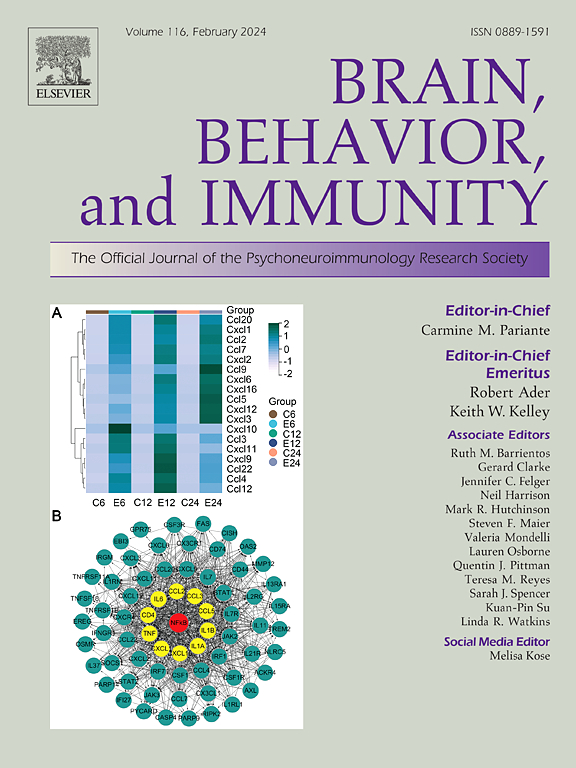Distinctive seizure signature in the first video case-control study of a naturally-occurring feline autoimmune encephalitis model
IF 8.8
2区 医学
Q1 IMMUNOLOGY
引用次数: 0
Abstract
Background and objective
Autoimmune encephalitis (AE) is a form of brain inflammation where pathogenic autoantibodies bind surface proteins. In humans, AE is at least as common as infective encephalitis, and seizures are a prominent manifestation. The most common adult human AE is associated with antibodies to leucine-rich glioma-inactivated 1 (LGI1-Ab-E). AE in non-human mammals is also recognised, notably the polar bear ‘Knut’, diagnosed with N-methyl D-aspartate receptor antibody encephalitis. LGI1-Ab-E is an emerging cause of spontaneously-arising AE in domestic cats. Our objective was to phenotype the seizure profile of feline LGI1-Ab-E and probe parallels to its human counterpart.
Methods
We characterised seizures in naturally-occurring feline LGI1-Ab-E. Three veterinary and two human neurologists independently blind-rated 35 LGI1-antibody positive and negative feline seizure videos from 24 cats (16 LGI1-Ab-E positive, 8 negative). Data analysed included seizure frequency, semiologies and their co-occurrence, localisation, inter-rater agreement, and predictive factors.
Results
The mean number of daily seizures at peak was significantly higher in LGI1-antibody positive compared to LGI1-antibody-negative cats (12.6 vs. 1.9/day, pcorr = 0.011). Semiologies statistically significantly enriched in LGI1-Ab-E observations included orofacial automatisms (88/120, 73 % vs. 26/55, 47 %, pcorr = 0.024), salivation (87/120, 73 % vs. 23/55, 42 %, pcorr = 0.004); and mydriasis (79/120, 66 % vs 19/55, 35 %, pcorr = 0.004), and almost exclusively seen in LGI1-Ab-E were circling (39/120, 33 % vs. 1/55, 2 %, pcorr=<0.001) and aggression (14/120, 12 % vs. 0/55, 0 %, non significant after correction). A temporal lobe onset was proposed in 67 % (80/120) of seropositive ratings, compared to 28 % (15/55) LGI1-Ab-E negative (p < 0.0001). Network analysis depicted complex and overlapping relationships between features, akin to the frequent and multifaceted seizures of human LGI1-Ab-E. Orofacial automatisms, mydriasis and temporal lobe localisation were predictive semiological features of feline LGI1-Ab-E.
Significance
Feline LGI1-Ab-E represents a clinically distinctive seizure disorder. Our findings highlight the value of studying naturally-occurring, biologically representative animal models which closely mimic human diseases. This bidirectional translational approach confers benefits across species and unites human and veterinary neurology.
首个自然发生的猫自身免疫性脑炎模型视频病例对照研究中的独特癫痫发作特征。
本文章由计算机程序翻译,如有差异,请以英文原文为准。
求助全文
约1分钟内获得全文
求助全文
来源期刊
CiteScore
29.60
自引率
2.00%
发文量
290
审稿时长
28 days
期刊介绍:
Established in 1987, Brain, Behavior, and Immunity proudly serves as the official journal of the Psychoneuroimmunology Research Society (PNIRS). This pioneering journal is dedicated to publishing peer-reviewed basic, experimental, and clinical studies that explore the intricate interactions among behavioral, neural, endocrine, and immune systems in both humans and animals.
As an international and interdisciplinary platform, Brain, Behavior, and Immunity focuses on original research spanning neuroscience, immunology, integrative physiology, behavioral biology, psychiatry, psychology, and clinical medicine. The journal is inclusive of research conducted at various levels, including molecular, cellular, social, and whole organism perspectives. With a commitment to efficiency, the journal facilitates online submission and review, ensuring timely publication of experimental results. Manuscripts typically undergo peer review and are returned to authors within 30 days of submission. It's worth noting that Brain, Behavior, and Immunity, published eight times a year, does not impose submission fees or page charges, fostering an open and accessible platform for scientific discourse.

 求助内容:
求助内容: 应助结果提醒方式:
应助结果提醒方式:


